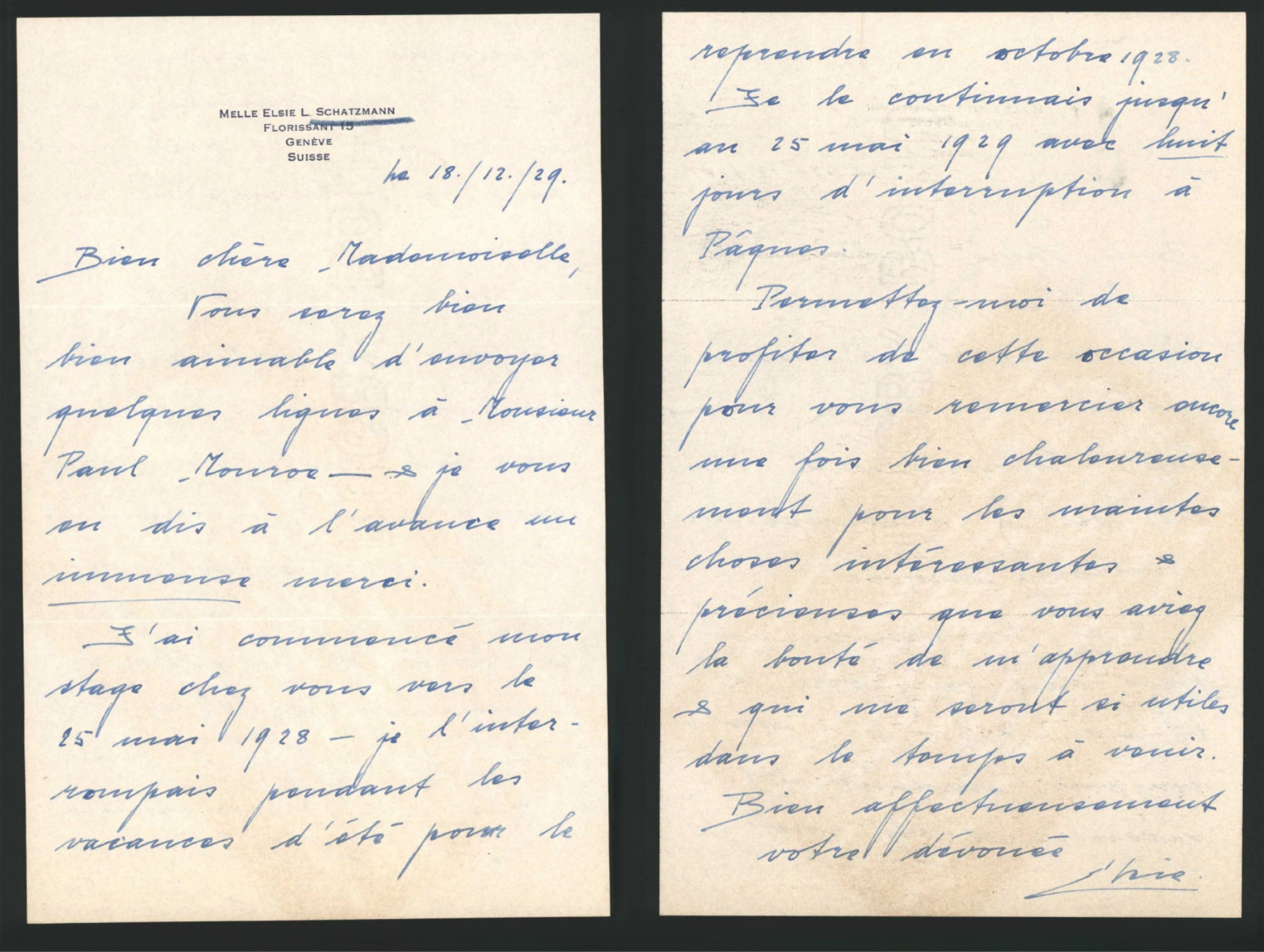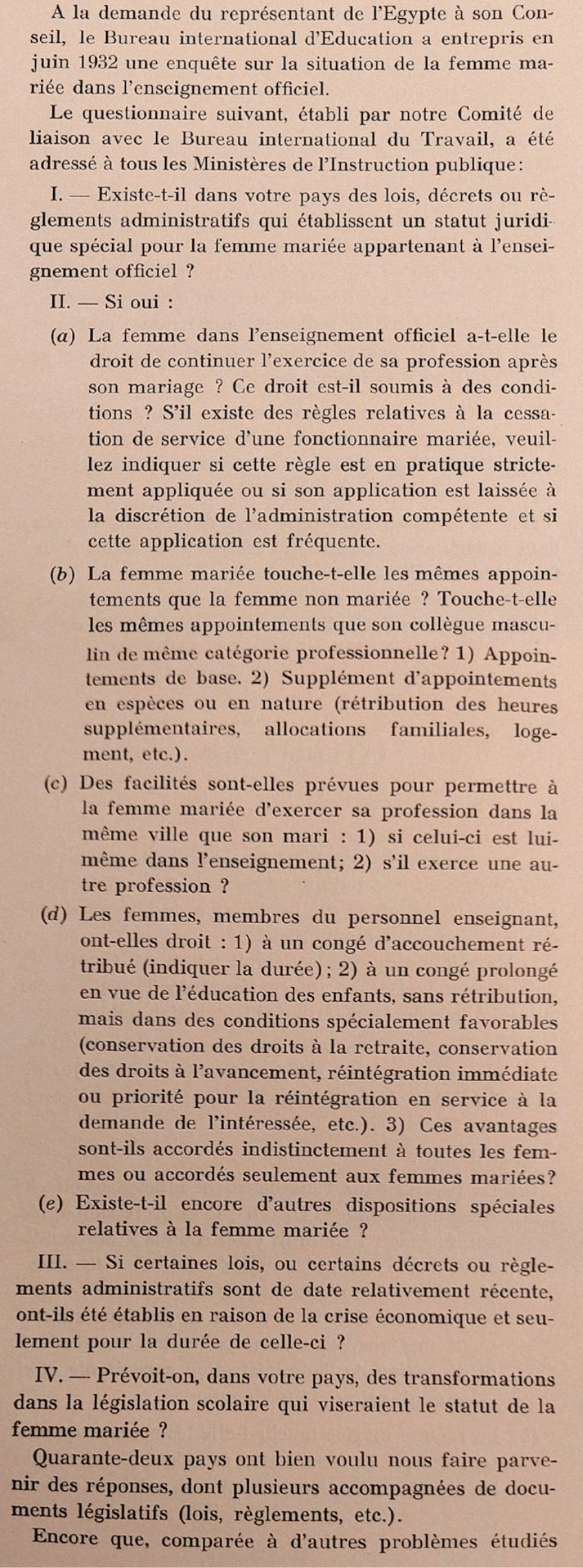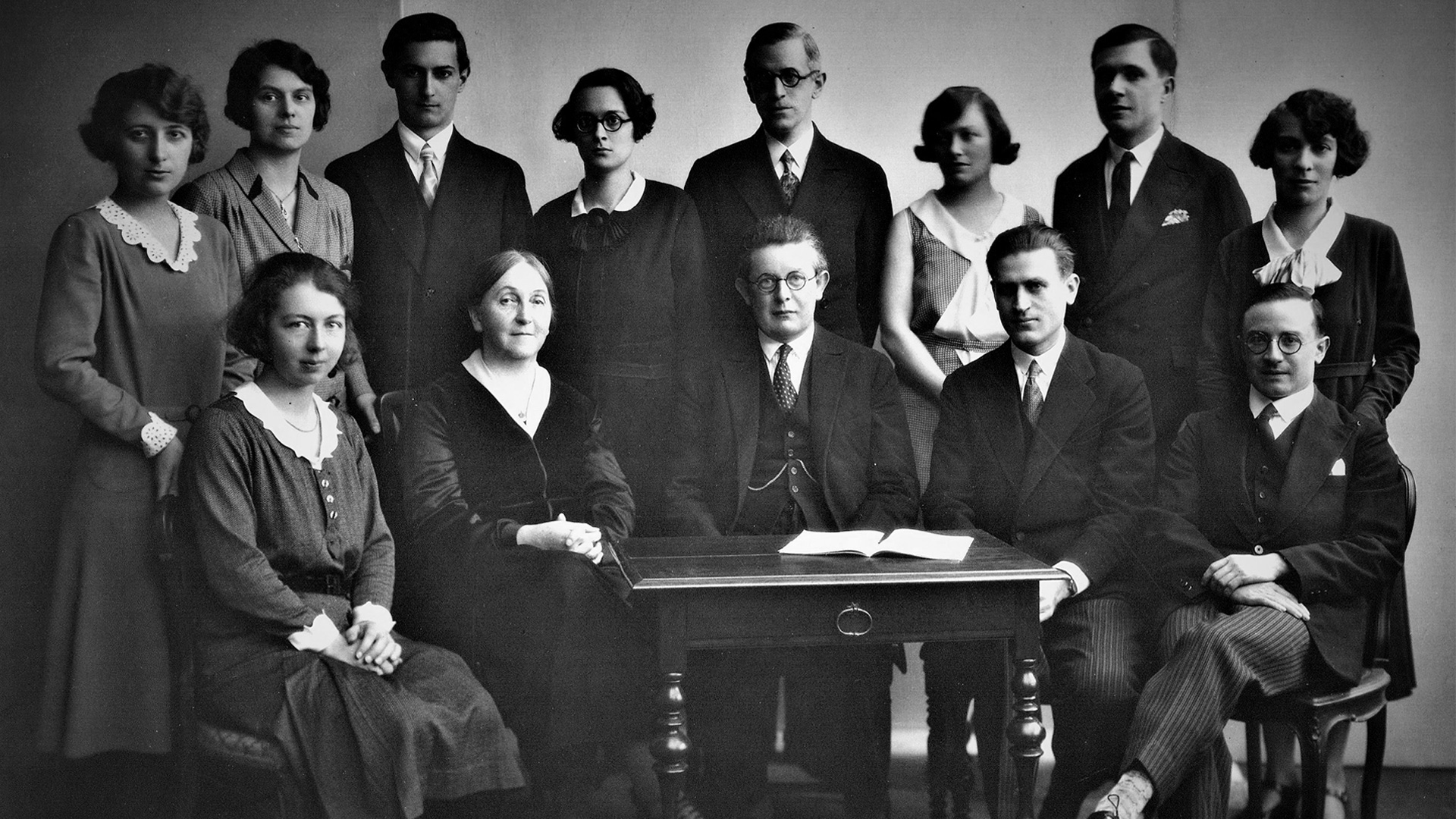Comparative Education a Story of “Founding Fathers”
Until comparatively recently the history of comparative education tended to be constructed as a story of ‘founding fathers’ in which women generally made an appearance after the Second World War.
The ‘founding fathers’ narrative builds on the historical access of women and men to higher education and draws on gendered notions of expertise. It is also a consequence of the type of texts and activities that have been considered foundational to the development of comparative education.
Like many histories of comparative education, Pedro Rossello, the Assistant Director of the IBE, begins his account of the development of the field with Marc Antoine Jullien of Paris and discusses the work of eight men and the activities of the League of Nations. He does, however, highlight the involvement of the American Dr Fannie Fern Andrews with the International Conference on Education convened for 1914. Fannie Fern Andrews was a keen supporter of the IBE.

1930
Women and Comparative Education at the IBE before the Second World War
When women engaged with comparative education they tended to do so in spaces outside higher education, including at the IBE. Attention to women’s roles as secretaries, interns, compilers or translators at organisations like the IBE begins to illustrate the engagement of women in the development of comparative education as a field. The CVs of some women employed at the IBE list the texts with which they were involved. While IBE texts were published under the collective name of the IBE, some of the introductions to the texts indicate where women were responsible for the work that went into the publication, as well as the women who assisted in various capacities.
1929
The IBEs Approach to Comparative Education
During the interwar period the IBE used a ‘synthetic approach’ to comparative education based on territorial understandings of national borders as the basis of international comparison. These studies used the type of descriptive statistics that had become the stock in trade of comparative educationists.
IBE comparative publications provided standardised summaries of information, which were organised alphabetically country by country, with an introduction that generally summarised the material. The IBE’s comparative research was intended to generate change. The preamble to the IBE’s 1929 Constitution noted that in order to promote “the establishment of peace and the moral and material progress of humanity”, it was important to collect educational data to facilitate the exchange of information so that each country could profit by the experience of others. The introductions to comparative texts included no recommendations for change, however. Articles 1 and 2 of the IBE Constitution show that this was deliberate and linked to the the IBE’s strategy to situate the organisation as non-political.

1932 · 1933
Elsie Iman (Lucy) Schatzmann (1897-1949) and Rachel Gampert (b.1904)
The involvement of Elsie Schatzmann in L’organisation de l’instruction publique dans 53 pays (IBE 1932) and of Rachel Gampert with La situation de la femma mariée dans l’enseignement (IBE 1933) illustrates some of the ways in which women engaged with comparative education at the IBE as well as opportunities for development as researchers that the IBE provided. They also illustrate some of the processes that have mitigated against the visibility of women in histories of comparative education.


1928 · 1929
Elsie Iman (Lucy) Schatzmann
Elsie Schatzmann was born in Switzerland and undertook advanced study at the Institute of Educational Sciences at the University of Geneva.
Between May 1928 and May 1929 the IBE provided Elsie with opportunities for further development as an intern. Marie Butts (IBE General Secretary) provided a reference for the fellowship that Elsie went on to hold at the International Institute of Teachers College, Columbia University, where she gained an MA in comparative education.
Elsie would spend four years in Rome as interpreter and research secretary for the United States Permanent Delegate at the International Institute of Agriculture. During this period she visited rural schools in Europe and remained in touch with the IBE. She had family members in the agricultural state of Iowa and she undertook similar visits in the USA, where she eventually settled.
From 1939 she served as executive secretary of the Committee on Rural Education of the American County Life Association about which she corresponded with the IBE. Her comparative book, The Country School at Home and Abroad, was published by the University of Chicago Press in 1942. It was based on her visits to rural schools in Europe and the USA.

1932
L’organisation de l’instruction publique dans 53 pays (IBE, 1932)
The thesis Elsie Schatzmann produced while a student at the Institute of Educational Sciences at the University of Geneva summarised school organisation in 53 different countries.
It became the backbone on which the IBE built its 1932 publication L’organisation de l’instruction publique dans 53 pays.
In July 1932, the IBE Bulletin, described L’organisation de l’instruction publique dans 53 pays as one of its most important publications.
It became the prototype for the IBE’s Yearbook (Annuaire).
While Elsie Schatzmann was at Teachers College in the USA the IBE prepared L’organisation de l’instruction publique dans 53 pays for publication. Copies of the text and of the diagrams of education systems were sent to ministries of education for confirmation and correction. Albin Jakiel (appointed to the IBE in 1930) dealt with the corrections that ministries returned.
Correspondence between Elsie and IBE members during this period refers to L’organisation de l’instruction publique dans 53 pays as Elsie’s book. But the attribution at the end of the introduction obscures Elsie’s role in the origin of the publication. It foregrounds Albin Jakiel and situates Elsie as a collaborator in the production of the text.
Albin JAKIEL
Membre de la Section d’Organisation Et de Législation scolaires, Avec la collaboration de Elsie SCHATZMANN

1927 · 1929
Elsie Schatzmann’s visual vocabulary
L’organisation de l’instruction publique dans 53 pays is very systematic in its use of visual representations of education systems.
The book was published at a point when visual representations were becoming increasingly systematised.
Elsie’s internship at the IBE coincided with the period between 1927 and 1929 when the IBE collaborated with Paul Otlet and Anne Oderfield on the graphic visualisation of didactic material.
Paul Otlet was one of the founders of the Union of International Associations. He was an important figure in the development of visual methods as a way of reducing data complexity.


1929
Elsie Schatzmann’s visual vocabulary
In his 1929 report to the IBE Council, Pierre Bovet, noted that Elsie’s work on the organisation of public education was being interpreted “by a magnificent collection of diagrams” (Bulletin 13, September 1929, p.2).
Her diagrams were included in the exhibition organised in connection with the IBE’s conference on public education where they aroused much interest.
In a letter dated 20 August 1929 Marie Butts (IBE General Secretary) wrote to Elsie, “Your series of graphics interests the visitors enormously. There are always two or three people consulting them and taking notes.”

1930
Re-drawing Elsie Schatzmann’s Diagrams
Elsie Schatzmann’s role in systematising the visual representations of educational systems is also obscured in L’organisation de l’instruction publique dans 53 pays.
The introduction to the book thanks Dr. Henri Heller for having agreed to draw the diagrams.
A letter to Elsie dated 27 October 1930 shows that after receiving corrections from ministries of education Albin Jakiel revised the diagrams for publication and they were redrawn in black and white rather than in colour. This was due to the high cost of printing colour diagrams and because the use of colour meant that when the diagrams were printed they were not clear.
On 13 January 1931 Marie Butts (IBE General Secretary) wrote to Elsie that her colour diagrams were more attractive than the black and white diagrams of Albin Jakiel but the colour was not as clear and the cost of colour diagrams was far more than the IBE could afford.

1931
Isaac Kandel and Elsie Schatzmann’s diagrams
As a student of comparative education at Teachers College Elsie Schatzmann attended lectures by the internationally renown comparative educationist, Isaac Kandel (1881-1965). She also discussed L’organisation de l’instruction publique dans 53 pays with him, including the preparation of the diagrams for publication.
On 12 October 1931 Isaac Kandel wrote to Elsie asking for copies of charts of the education systems for the six chapters that he was preparing for inclusion in his Studies in Comparative Education (published in 1933). In his letter he noted, “I think there would be some advantage in using a standard form.” Elsie passed his request to Marie Butts (IBE General Secretary), who sent him the diagrams in November 1931. He cited L’organisation de l’instruction publique dans 53 pays in his book, although the format of diagrams of educational systems he included differed from those of L’organisation de l’instruction publique dans 53 pays.
Elsie Schatzmann had written earlier to Marie Butts (on 9 March 1931) that Isaac Kandel thought that the diagrams in L’organisation de l’instruction publique dans 53 pays should have appeared in colour and that he regretted that he had not been around to raise funds for the publication of her book. He had also told her that he believed that L’organisation de l’instruction publique dans 53 pays would be in much demand.



Rachel Gampert (b.1904)
Curriculum Vitae
Rachel Gampert held a diploma in Educational Sciences from the University of Geneva. Prior to joining the IBE in 1926 she worked as secretary to the British Chamber of Commerce in Lausanne and had also spent a period of apprenticeship at the regional library in Lausanne. She was employed full-time at the IBE until 1948 and spent two study periods in England during this time.
She rose to be director of the IBE’s Information Division and then IBE General Secretary. She went on to work in the USA at the Library of Teachers College, Columbia University, and as publications secretary for the World YWCA. In the 1960s she returned to work at the IBE on a part-time basis. In her travel documents she described herself as a secretary.
Rachel Gampert came from a well-respected Geneva family. She was related to Albert Picot (1882-1966), a Minister of State (and from 1945 of Public Instruction), who chaired the IBE Executive Committee from 1948-1954.

1940
Rachel Gampert and IBE Comparative Studies
Rachel Gampert was involved in a number of the IBE’s comparative publications, which are listed on the left in her CV.
Like La situation de la femme mariée dans l’enseignement, these publications were linked to the IBE’s conferences on public instruction. They were based on survey information gained through questionnaires sent to Ministries of Education.

1933
La situation de la femme mariée dans l’enseignement
La situation de la femma mariée dans l’enseignement covered 42 countries. It was compiled against a background in which the economic constraints of the 1930s were being disproportionately applied to married women and linked in many countries with a conservative postwar vision that called on women to leave paid labour to men and to return to home and motherhood.
The impetus for La situation de la femma mariée dans l’enseignement came from the IBE council meeting in 1932, when the Egyptian representative on the Council expressed his government’s interest in knowing about the status of married women teachers. This was at a point when the Egyptian authorities were dealing with tensions between tradition and change in the roles of married Egyptian women that were impacting on the shortage of women teachers at a point when girls’ education in Egypt was expanding.

The IBE developed the questionnaire for La situation de la femma mariée dans l’enseignement in liaison with the International Labour Organisation (ILO) in Geneva, where Margaret Thibaut was leading investigations on married women’s work. The development of the questionnaire was discussed at the IBE-ILO Liaison Committee which had been established to co-ordinate overlaps between the work of the two organisations.
The questionnaire for the survey (on the left) was published in the IBE’s July 1932 Bulletin and was circulated to Ministries of Education for their response.

Responses to the questionnaire were submitted in various formats. Some were typed and, like the response from Mysore in India, some were returned in a tabulated format.


Some responses, like the return from Bulgaria, were hand written.



1933
The status of the married woman teacher
IBE Bulletin number 28 (1933) noted that the report on La situation de la femma mariée dans l’enseignement ran to 88 pages and contained a “bird’s eye view of the general state of the question” and “general summaries of the rights of the married woman teacher as described by each ministry of education”. It described the report as “purely informative” and stated that it did “not seek to recommend any one system, nor to draw conclusions. It merely attempts to give an exact and impartial picture of a problem which is so much to the fore in many countries.” This was consistent with the IBE Constitution, which stated that educational data would be collected to facilitate the exchange of information so that each country could profit by the experience of others.
Like all inquiries into aspects of education, however, La situation de la femma mariée dans l’enseignement was political in nature. Questions about the position of women as workers, particularly those who are married and who may or may not be mothers, have a long political history that continues to resonate today.

“Women’s Engagement with Comparative Education at the IBE”
© Joyce Goodman · joyce.goodman@winchester.ac.uk

